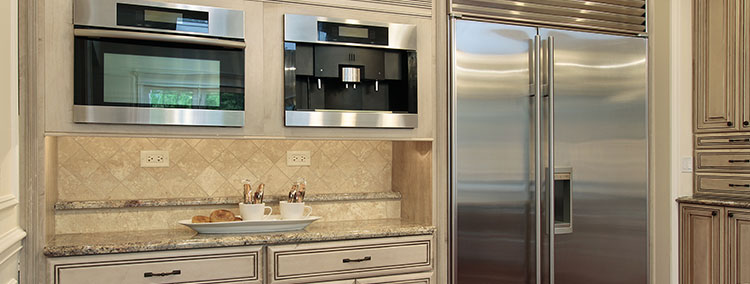
One of the major problems with refrigerators is failure to cool food. According to appliance repair professionals, the problem comes about due to many reasons that include:
Failure to plug in the refrigerator
you or someone else might have mistakenly unplugged the fridge. since there is no power reaching the refrigerator, it doesn’t cool food. Before you rush to a conclusion the appliance is faulty, check whether the refrigerator is properly plugged in. To fix the problem, you only need to plug in the appliance and continue cooling your food.
Improperly set thermostat
The fridge might also fail to cool food when the thermostat isn’t correctly set at the right temperature. If the appliance is plugged in but not working, check the thermostat. If you have a side-by-side freezer, the thermostat is most likely located at the back. On the other hand, if you have an over-under fridge, the thermostat is located under the refrigerator.
Locate the thermostat and check the temperature settings. You should then adjust it accordingly.
You have a problem with the compressor
From its name, the compressor compresses and pushes refrigerant vapor into the coils outside the refrigerator. The pressure and pushing create heat that forms hot gas that later cools and absorbs heat from the fridge and freezer.
If the freezer fan is running, but the fridge isn’t getting cold, the compressor might be the problem. The compressor is located behind the refrigerator and at the bottom. To access it, pull the refrigerator away from the wall.
To fix the problem, get a new compressor relay then test it with the current compressor. If the problem is with the compressor, you have to replace it. Connect the new appliance to the suction line, process line, and discharge line.
Problem with the evaporator fan
The evaporator fan blows cool air you feel when you open the refrigerator door. The fan pulls air across the evaporator coil, cools it, and then pushes it across the freezer and refrigerator. If the evaporator doesn’t work at the same time as the compressor, it won’t produce cool air.
The evaporator fan is located behind the freezer wall. You need to empty the contents of the freezer and shelving before you access it.
In most cases, if the fan isn’t working, you have a problem with the motor. Install a new motor then insert fan blades. You can do the work by yourself if you have the skills, but if you have never done it before, let an expert handle it.
Presence of a lot of food
If you have plenty of food boxes blocking the vents, cool air won’t circulate the fridge as well as it should. To fix the problem, organize the fridge or get rid of any food that could be blocking airflow and preventing the refrigerator from cooling.
This is easy to do, and you don’t even need a professional to help you out.
Problem with the condenser fan
The role of the condenser fan is to cool the compressor and condenser coils. In a properly functioning refrigerator, the fan should run when the compressor is running. If the fan isn’t working correctly, the refrigerator temperature can rise and overheat the compressor.
In most fridges, the condenser fan is located in the bottom cabinet. Only a few refrigerators will have condenser coils here instead of the fan.
For you to fix the problem, ensure the fan is spinning freely, and any objects are not obstructing it. If there are blocking materials, you have to replace the condenser fan motor. All you need to do is to buy a new motor from your local store and install it.
If you have the skills, you can install it by yourself, but if you have never done it before, ask a professional to help you out.
Failure of the air dumper to open and close properly
When the air damper doesn’t open or close properly, it impacts the temperature of the refrigerator. When the damper doesn’t open, cold air doesn’t travel from the freezer to the fridge hence making it warmer.
To fix the problem, remove the old air damper and replace it with a new one. You can remove it by yourself or hire a refrigerator repair professional to help you out.
The post appeared first on Express Appliance Repair